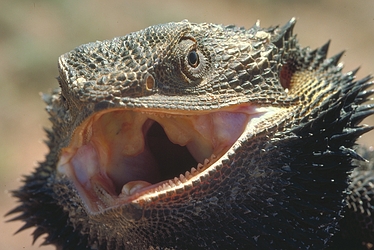Why is My Bearded Dragon Not Responding? The Problem and Solution Guide for Beginners
Introduction: Getting to Know Your Bearded Dragon
Bearded dragons are becoming increasingly popular as pets thanks to their docile nature and low-maintenance requirements. These reptiles are native to Australia and are characterized by their passive demeanor, easily recognizable spiny beard, and rounded, stocky build.
Despite their easy-going nature, bearded dragons are still animals with specific needs and behaviors. If you have a bearded dragon at home, it’s essential to pay attention to their actions and habits to ensure that they’re healthy and happy. Unfortunately, there may be instances when your bearded dragon doesn’t act as you expect them to. One of the most common issues that bearded dragon owners encounter is when their pet seems unresponsive or lethargic.
Identifying the Problem: What is Causing Your Bearded Dragon to Not Respond?
Before you can develop a solution, it’s critical to identify the root of the problem. Here are some possible reasons why your bearded dragon isn’t responding:
- Inadequate heat or UVB lighting
- Dehydration or malnourishment
- Stress or anxiety caused by changes in routine or surroundings
- Underlying health issues such as parasites or infections
- Lack of interaction or activity
Problem 1: Inadequate Heat or UVB Lighting
Bearded dragons are ectothermic, which means that they depend on external sources of heat to regulate their body temperature. A proper heat and lighting setup is crucial for your bearded dragon’s health and well-being. If your pet isn’t receiving adequate heat or UVB lighting, they may become unresponsive or lethargic.
To address this issue, ensure that your bearded dragon’s enclosure is equipped with the appropriate heat and lighting sources. You’ll need a basking lamp that provides a temperature gradient, as well as a UVB lamp that’s on for 10-12 hours per day. Make sure to use a thermometer and hygrometer to monitor the temperature and humidity in the enclosure.
Problem 2: Dehydration or Malnourishment
Bearded dragons require a specific diet and access to water to maintain their health. If your bearded dragon isn’t eating or drinking enough, they may become unresponsive or lethargic. It’s essential to check that your pet’s food and water sources are adequate.
A healthy bearded dragon diet consists of insects such as crickets, dubia roaches, and Phoenix worms, as well as vegetables like collard greens and squash. Make sure that the food is small enough for your bearded dragon to eat and avoid feeding them brightly colored or high-oxalate vegetables like spinach or kale. You should also provide a shallow water dish for your pet to drink from.
Problem 3: Stress or Anxiety
Bearded dragons prefer a structured environment and routine, so any changes to their surroundings or schedule can cause stress or anxiety. This may manifest as lethargy or a lack of response. If you’ve recently made changes to your bearded dragon’s enclosure or moved them to a new location, they may need some time to adjust.
To minimize stress, keep the environment consistent and avoid sudden changes. This includes keeping the enclosure in a low-traffic area and providing hiding spots for your pet.
Problem 4: Underlying Health Issues
If your bearded dragon is not responding and showing other symptoms such as a lack of appetite or lethargy, there may be underlying health issues. Parasites, infections, and other medical conditions can cause a lack of response.
If you suspect that your bearded dragon may be sick, it’s essential to take them to a reptile veterinarian as soon as possible for a check-up.
Problem 5: Lack of Interaction or Activity
Bearded dragons require some form of stimulation and interaction to keep them active and healthy. A lack of activity and interaction can lead to lethargy and unresponsiveness.
To solve this issue, consider spending more time with your bearded dragon and providing toys or other forms of entertainment. You can also take your pet out of their enclosure and provide them with supervised free roam time outside. This will not only give them exercise but will also stimulate their natural curiosity and behavior.
Conclusion: Caring for Your Bearded Dragon
As a bearded dragon owner, it’s crucial to be aware of your pet’s actions and behaviors. If you notice that your bearded dragon isn’t responding, it’s essential to identify the problem promptly and take action to address it. Whether it’s adjusting their heat and lighting sources or spending more quality time with your pet, there are always solutions that can help your bearded dragon lead a happy and healthy life.









